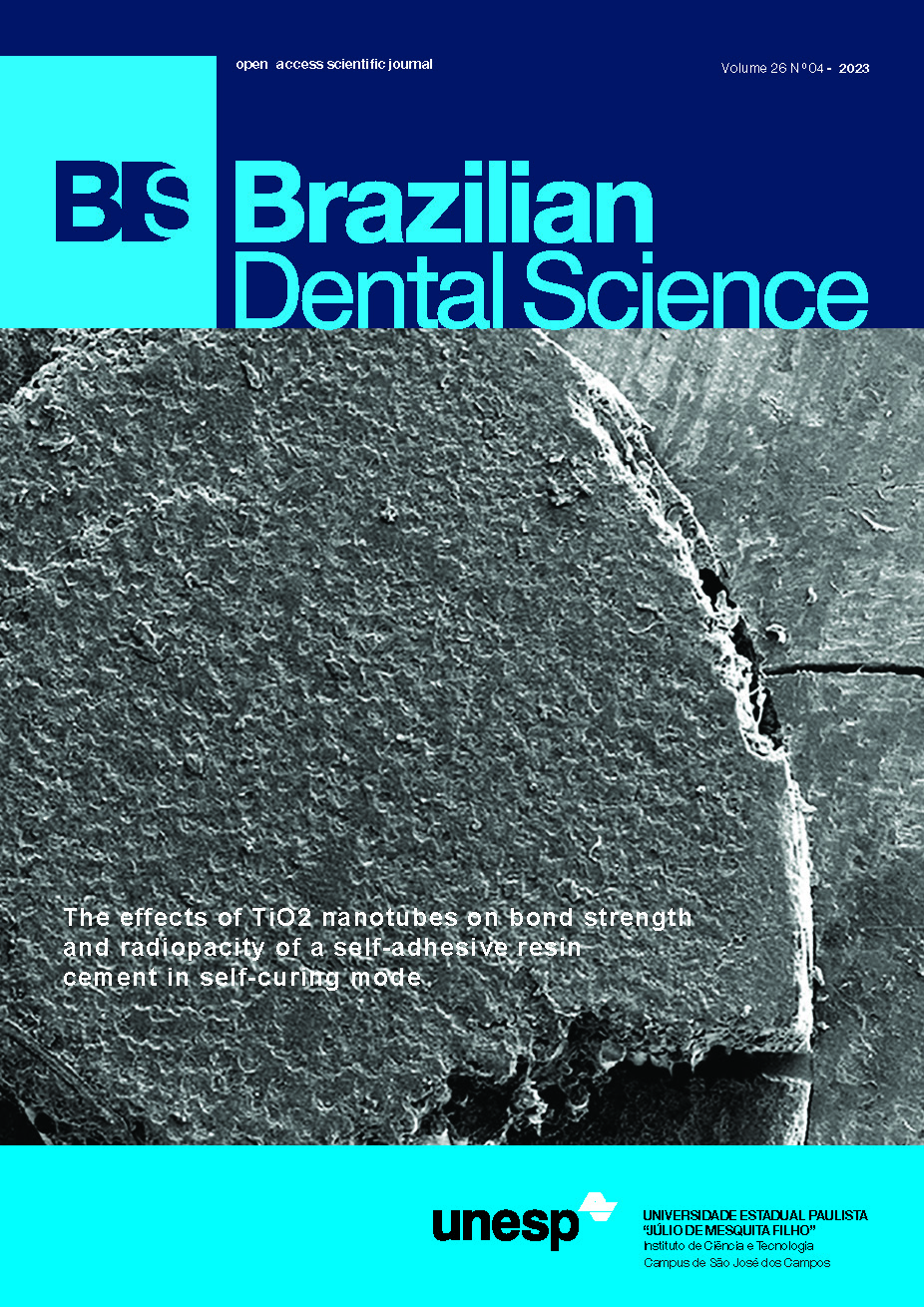Influence of substrate, cement and aging on the biaxial flexural strength of lithium disilicate
DOI:
https://doi.org/10.4322/bds.2023.e3923Abstract
Objective: To evaluate the biaxial flexural strength (BFS) of lithium disilicate (L), cemented on different substrates (epoxy resin - E and metal - M) with dual-cure resin cement (Rc) and zinc phosphate cement (Zc), not aged, thermally aged (TC) or thermo-mechanical aged (TC/MC). Material and Methods: Disks of L, E, and M were fabricated, and the cementation was performed according to the following groups: ERc (L+E+Rc); MRc (L+M+Rc); MZc (L+M+Zc); EZc (L+E+Zc). Ten samples from each described group were tested in BFS, ten more samples were subjected to TC (1×104 cycles between 5 ºC and 55 ºC water), and the last 10 samples were subjected to TC/MC (MC: 1.2×106 cycles, 50 N, 3.8 Hz). The BFS test was performed and scanning electron microscopy (SEM) was performed to evaluate the failure mode. The effect of the cementation strategy (cement/substrate) was compared in each aging method and the effect of the aging method was evaluated for each cementation strategy by one-way ANOVA and Tukey post-hoc test (a=0.05). Results: The strength values were highest to M (237.8 ~ 463.9 MPa), in comparison to the E (41.03 ~ 66.76 MPa), despite aging and luting agent. Flexural strength data decreased after TC and TC/MC in groups cemented with Zc, but was stable when cemented with Rc. SEM analysis indicated that failure origins were located at the tensile surface of the L. Conclusion: Lithium disilicate discs cemented to the metallic substrate presented the highest biaxial flexural strength. The cementation with dual-cure resin cement did not decrease BFS after aging.
KEYWORDS
Aging; Cementation; Ceramics; Flexural strength; Lithium disilicate.
Downloads
Published
How to Cite
Issue
Section
License
Brazilian Dental Science uses the Creative Commons (CC-BY 4.0) license, thus preserving the integrity of articles in an open access environment. The journal allows the author to retain publishing rights without restrictions.
=================




























